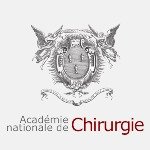Ultrasons ultrarapides et imagerie et thérapie / Ultrafast ultrasound in biomedical imaging and therapy
Free

Académie Nationale de Chirurgie
4.3
· 178 Reviews
About
30 minutes
French
Au cours de la dernière décennie, l'introduction des transmissions d’ondes planes ultrasonores à l'aide de systèmes logiciels a permis d'augmenter considérablement la cadence d'imagerie par ultrasons jusqu'à 20 000 images/s, tandis que l'imagerie par ultrasons conventionnelle est limitée à 100 images/s.
Une fréquence d'images aussi élevée a offert de nouvelles possibilités pour l'imagerie quantitative du corps humain. Il devient par exemple possible de suivre en temps réel les vibrations transitoires – dites ondes de cisaillement – se propageant dans les organes. Cette « sismologie du corps humain » fournit des cartes quantitatives des raideurs tissulaires locales dont la valeur ajoutée pour le diagnostic a été récemment démontrée dans de nombreux domaines de la médecine comme la radiologie ou la cardiologie.
Plus récemment, l'imagerie ultrarapide a permis de caractériser précisément des flux sanguins vasculaires complexes. Elle donne également aux ultrasons la capacité de détecter un flux sanguin très subtil dans de très petits vaisseaux.
Dans le cerveau, le Doppler ultrasensible a ouvert la voie à la fUltrasound (imagerie ultrasonore fonctionnelle) de l'activité cérébrale avec une résolution spatiale et temporelle sans précédent par rapport à l'IRMf. En cardiologie, l'imagerie ultrasonore ultrarapide permet l'imagerie quantitative de la fonction coronarienne des petites artères intramyocardiques. L'application des ultrasons ultrarapides au guidage et au suivi de la thérapie par ultrasons focalisés sera discutée.
In the last decade, the introduction of plane wave ultrasound transmissions using software based systems has enabled increasing dramatically the frame rate of ultrasound imaging up to 20 000 images/s while conventional ultrasound imaging is limited to 100 images/s.
Such a high frame rate has offered new possibilities for imaging quantitatively the human body. It becomes possible for instance to track in real time the transient vibrations – known as shear waves – propagating through organs. Such "human body seismology" provides quantitative maps of local tissue stiffness whose added value for diagnosis has been recently demonstrated in many fields of medicine including radiology and cardiology.
More recently, ultrafast imaging was found to provide high-precision characterization of complex vascular blood flows. It also gives ultrasound the ability to detect very subtle blood flow in very small vessels. In the brain, ultrasensitive Doppler paved the way for fUltrasound (functional ultrasound imaging) of brain activity with unprecedented spatial and temporal resolution compared to fMRI.
In cardiology, ultrafast ultrasound imaging enables the quantitative imaging of the coronary function of small intramyocardial arteries.
The application of ultrafast ultrasound to the guidance and monitoring of focused ultrasound therapy will be discussed.
Mathieu Pernot, Physics for Medicine, INSERM, ESPCI, CNRS, PSL research university, Paris, France

Académie Nationale de Chirurgie
4.3
· 178 Reviews
